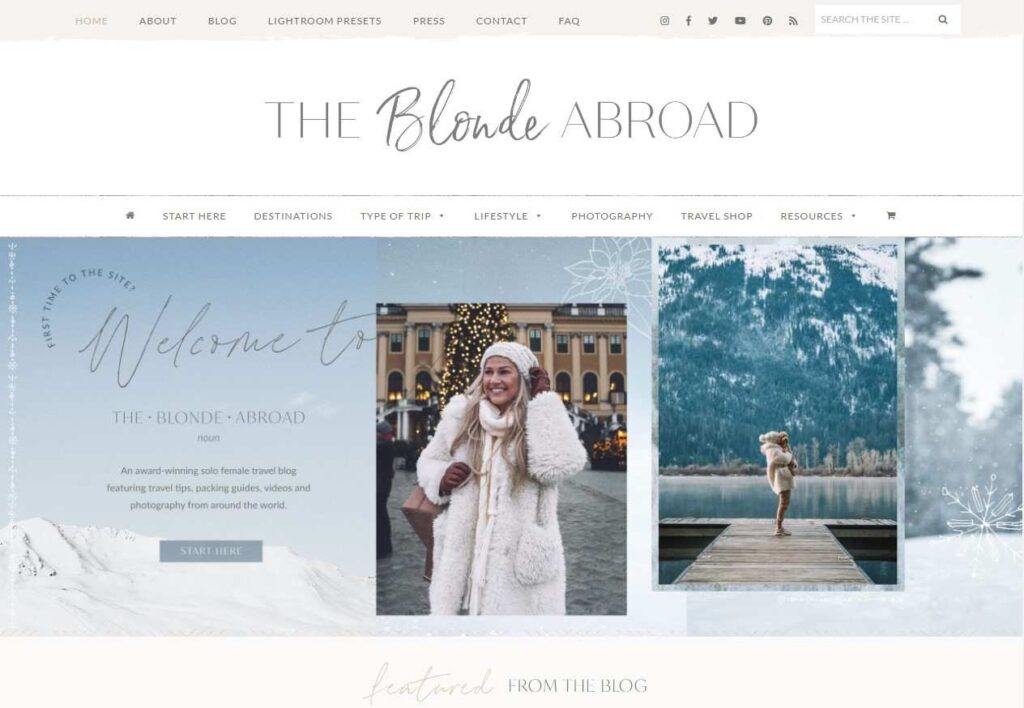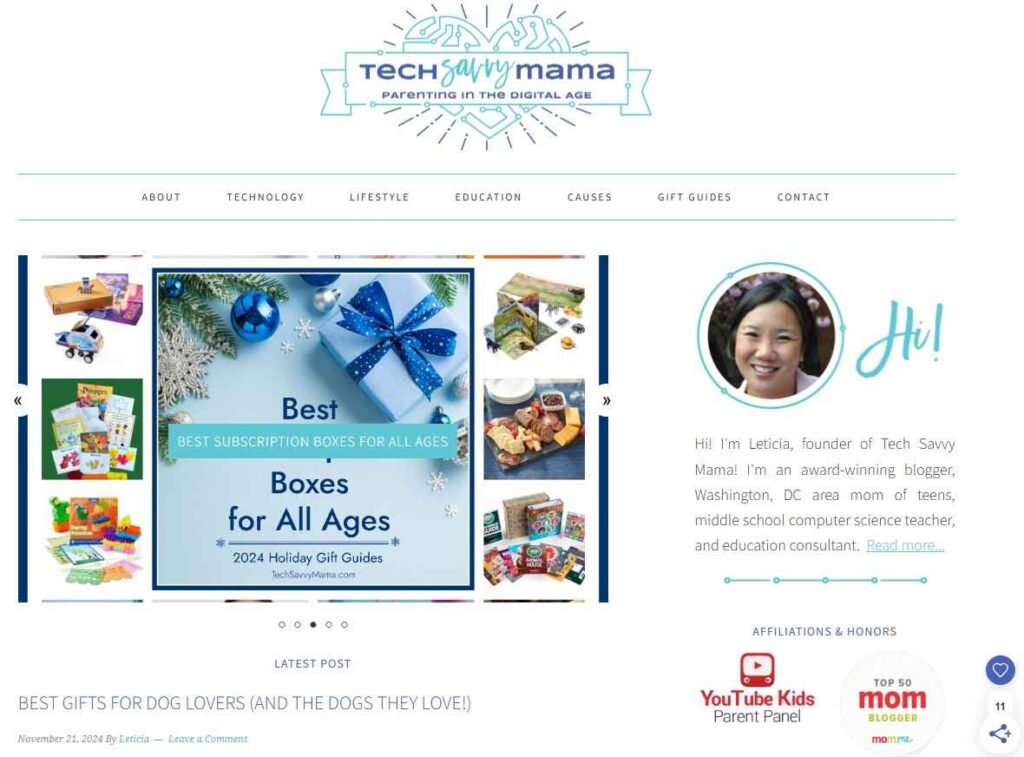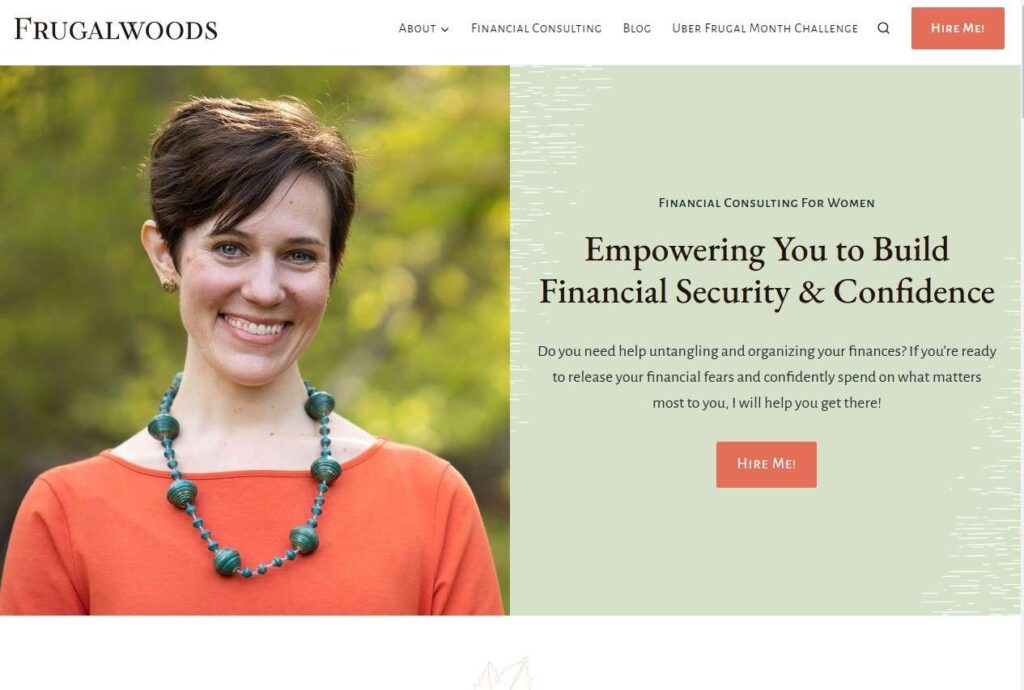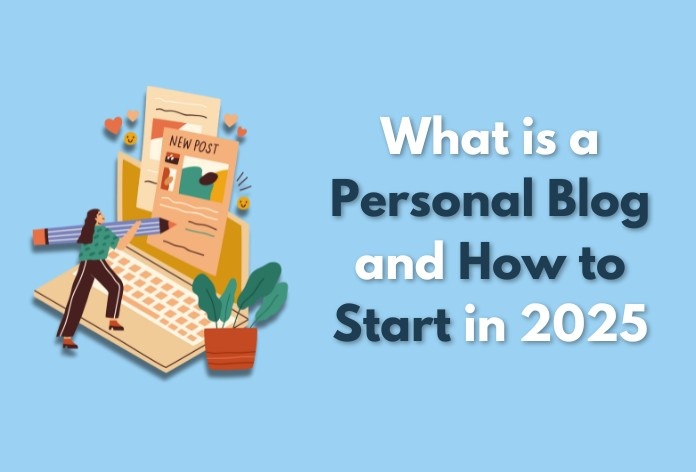What is a personal blog and how can you start one in 2025? Personal blogs have grown from basic online journals into strong platforms to tell stories, connect with others, and even make money. They give you a real way to talk about what you love, write down your experiences, or show you know your stuff while reaching people all over the world. If you’re into travel, lifestyle, food, or working on yourself, a personal blog is your online space to let your voice be heard.
As 2025 begins, launching a personal blog brings both thrill and ease. Today’s tools and platforms cater to newcomers and veterans making it simpler than ever to create a unique online presence. Yet, with the internet flooded with blogs, you need more than just a website to find your place and catch people’s eye. This guide will walk you through what is a personal blog and how to start in 2025. You’ll find step-by-step instructions, helpful hints, and stories of bloggers who turned their interests into successful platforms. Let’s begin building your online legacy!
What is a Personal Blog?
A personal blog serves as an online platform for people to express their ideas, narratives, passions, and life events. In contrast to specialized blogs that aim to reach a particular readership or cover a specific subject, personal blogs highlight the writer’s individual viewpoint combining various topics.
Types of Personal Blogs:
Personal blogs come in many forms, reflecting the diverse interests and goals of their creators. Here’s a breakdown of the most popular types:
1. Lifestyle Blogs
Lifestyle blogs are flexible and talk about many parts of the blogger’s daily life, like fashion, fitness, home decor, and hobbies. They want to give readers helpful tips and ideas to improve their own lives.
Example: Cup of Jo, which blends motherhood, style, and culture, is a prime example of a lifestyle blog.
2. Travel Blogs
Travel bloggers record their trips, offer destination guides, and give tips to other travelers. Their blogs are very visual, usually featuring beautiful photos and useful advice for those who love to travel.
Example: The Blonde Abroad focuses on solo and female travel with inspiring stories and itineraries.
3. Food and Cooking Blogs
These blogs provide recipes, cooking advice, and stories about food. Some concentrate on particular diets like vegan or keto, while others cover different world cuisines or food photography.
Example: Pinch of Yum offers delicious recipes with personal anecdotes and step-by-step instructions.
4. Parenting Blogs
Parenting blogs are for moms and dads, providing stories they can relate to, helpful tips, and suggestions for products. They usually act as a support system for parents dealing with the difficulties of raising kids.
Example: Mommy Shorts blends humor with practical parenting insights.
5. Personal Finance Blogs
These blogs concentrate on managing money, making budgets, and gaining financial freedom. They offer useful tips and share personal stories to assist readers in reaching their financial objectives.
Example: Frugalwoods chronicles a family’s journey to financial freedom through frugality and intentional living.
6. Fitness and Wellness Blogs
These blogs encourage people to live healthier lives by providing exercise routines, wellness tips, and inspiring stories.
Example: Many fitness-focused Instagram influencers use blogs to elaborate on their fitness journeys or provide resources like workout guides.
7. Creative Blogs
Creative blogs are for artists, writers, and photographers who use the website to show their work and talk about how they create it.
Example: Hyperbole and a Half combines humor and art to share personal stories.
8. Tech and Gadgets Blogs
These blogs are perfect for tech lovers and people who want to keep up with the latest trends. They focus on checking out new technology, providing how-to guides, and giving helpful advice.
Example: Tech Savvy Mama bridges technology and family life with practical reviews and advice.
9. Self-Improvement Blogs
These blogs concentrate on personal development, productivity, and mental health. They encourage readers to enhance different areas of their lives, ranging from work to relationships.
Example: Wait But Why provides deep, thought-provoking content on life’s big questions and challenges.
10. Niche Hobby Blogs
These blogs focus on particular interests like gaming, knitting, or photography. They usually draw in loyal readers who share the blogger’s enthusiasm for the hobby.
Example: A blog focusing solely on photography tips or reviews of gear would fall into this category.
Every personal blog is made for different groups of people, and some bloggers mix several types together in their writing. If you’re starting a personal blog, think about what you like and know the most about!
READ MORE :
Top 40 Easy Niches for Blogging in 2025: A Complete Guide
How to Start a Blog on a Budget 2025: A Step-by-Step Guide
Key Characteristics of Personal Blogs
- Personal Voice: Written in the author’s own words, usually in a friendly or thoughtful tone.
- Varied Topics: Content can cover topics like travel, hobbies, life advice, and personal opinions.
- Engagement: Blogs usually have interactive features, like comment sections, to involve readers.
Benefits of a Personal Blog
1. Creative Outlet
A blog lets you show your creativity, whether you’re writing, taking photos, or telling stories.
2. Builds Personal Branding
Your blog can showcase your skills in writing, photography, or any topic you often talk about, helping to show your expertise.
3. Connects with Like-Minded Individuals
With your blog, you can draw in people who like the same things as you, forming a group of friends.
4. Potential for Income
Personal blogs can make money by promoting other companies’ products, getting paid to write posts for sponsors, or selling their own items or services.
5. Enhances Writing and Digital Skills
Keeping a blog helps you improve your writing, SEO, and social media skills.
Examples of Successful Personal Blogs: A Closer Look
Here’s an overview of 10 successful personal blogs that showcase diverse content, themes, and approaches to personal blogging:
1. Cup of Jo

This blog, started by Joanna Goddard, is a lifestyle haven that covers motherhood, relationships, style, travel, and culture. Known for its authentic voice, it has grown into a community-driven platform with vibrant comment sections. The blog often explores heartfelt topics like parenting challenges and personal growth, alongside lighter content such as fashion advice and travel guides.

A travel-focused blog by Kiersten Rich, The Blonde Abroad inspires wanderlust with guides tailored for solo and female travelers. From practical travel tips to destination highlights, Kiersten’s blog empowers readers to explore the world while sharing her personal adventures
3. Pinch of Yum

Run by Lindsay Ostrom, this food blog blends delicious recipes with personal storytelling. Lindsay provides easy-to-follow recipes, cooking tutorials, and meal-planning tips, making it a favorite for home cooks looking to create flavorful dishes.

Created by Leticia Barr, this blog helps families navigate technology with confidence. It features reviews of tech gadgets, educational resources, and tips for fostering healthy screen habits for kids. Leticia’s focus on tech literacy for parents makes it a standout in its niche.
5. Wait But Why

Tim Urban’s blog is a treasure trove of thought-provoking, long-form content. Tackling topics like artificial intelligence, procrastination, and life’s big questions, Wait But Why captivates readers with its humor and deep dives into complex subjects.
6. Frugalwoods

A personal finance blog by Elizabeth Willard Thames, Frugalwoods chronicles her journey to financial independence. Elizabeth shares practical tips on frugal living, budgeting, and minimalist lifestyles, inspiring readers to take control of their finances.

This food blog, created by Dana Shultz, features simple, plant-based recipes requiring 10 ingredients or fewer. It’s perfect for those seeking delicious, easy-to-make meals that align with a minimalist approach.

Allie Brosh’s blog is a humorous blend of illustrated stories and personal reflections. Known for its wit and relatability, it’s both entertaining and poignant, tackling themes like mental health with honesty and humor.

Geraldine DeRuiter’s blog blends travel tales with personal musings, offering a mix of humor and heartfelt storytelling. Her ability to weave meaningful narratives into her travel experiences makes The Everywhereist a favorite for readers seeking more than just destination guides.
10. Mommy Shorts

Ilana Wiles shares the humorous side of parenting through relatable anecdotes and parenting hacks. Her blog provides both laughter and practical advice, appealing to parents navigating the ups and downs of family life.
Each of these blogs demonstrates the power of a unique perspective and authentic storytelling, making them exemplary models for aspiring personal bloggers. If you’d like more in-depth analysis on any specific blog, feel free to ask!
How to Start a Personal Blog in 2025
Step 1: Figure Out Your Motives and Who You’re Talking To
- Purpose of Blogging: Decide if your blog’s goal is to share your day-to-day, showcase your knowledge, or rake in some cash.
- Who’s Gonna Read: Think about your readers. Shape your writing style and subjects for them.
Step 2: Settle on a Blog Name and What You’ll Talk About
- Name Your Blog: Choose a title that mirrors your character or what your blog is all about.
- Choosing Your Focus: Stick to subjects that get you excited but also, throw in a mix of other stuff too.
Step 3: Select a Platform for Blogging
Pick a platform that’s a breeze to use. Some major ones to look at include:
- WordPress.org: Tops for making it your own and growing big.
- Blogger: Easy-peasy for newbies.
- Wix: A winner for artsy blog vibes.
- Squarespace: Snazzy templates and a breeze to use.
Step 4: Get Good Hosting and Your Own Domain
- Go for hosts like Bluehost, SiteGround, or Hostinger to keep things smooth.
- Grab a domain that’s like your blog’s name (yeah, like www.yourblogname.com).
Step 5: Make Your Blog Look Cool
- Pick a theme or template that fits your blog’s style.
- Tweak the design, letters, and colors to make it snappy.
Step 6: Map Out Your Content Game Plan
- Content Calendar: Lock in themes on a timetable to maintain uniformity.
- SEO Optimization: Harness tools such as Rank Math or Yoast SEO to pinpoint keywords.
- Multimedia: Throw in images, videos, or infographics to make posts pop.
Step 7: Write and Publish Content
- Kick things off with a captivating intro post.
- Stick to a regular rhythm for updates.
- Shout out about your stuff on social networks and mingle with your followers.
Step 8: Promote Your Blog
- Tap into spots like Instagram, Facebook, and Pinterest to put your blog posts out there.
- Team up with other bloggers or take a stab at guest blogging.
- Grow an email list to chat with your peeps.
Step 9: Monetize Your Blog
Once you gain followers, start trying out:
- Affiliate Marketing: Team up with brands to earn commissions.
- Sponsored Posts: Work with businesses for money in exchange for posts.
- Products or Services: Offer e-books, courses, or goods for sale.
- Ad Revenue: Show ads using platforms like Google AdSense or Mediavine.
Step 10: Keep an Eye on Things and Make Them Better
Leverage tools such as Google Analytics to keep an eye on who visits your site and how they interact with it. Make updates to your older posts so they stay up-to-date.
SEO Advice for Private Journals in 2025
- Exploring Keywords: Discover popular search terms using apps such as SEMrush or the Google Keyword Planner.
- Meta Tags: Craft enticing meta descriptions to boost click rates.
- Linking Within: Connect to previous articles to hold reader interest.
- Optimizing for Mobile: Check that your weblog is easy on mobiles for top placement.
READ MORE :
What is SEO and How It Works IN 2025
FAQs : What is a Personal Blog and How to Start in 2025
1.Personal blog vs Niche blog?
A personal blog features a variety of themes that are a reflection of the writer’s individuality. A niche blog sticks to a particular topic.
2.Starting a blog, what’s the price tag?
You might spend between $50 and $200 each year for a basic blog. It varies with hosting services and extra cool features.
3.Is anonymous blogging a thing?
Yeah, loads of bloggers go by fake names or just skip on sharing who they are.
4.Top tools for blogging newbies?
If you’re starting out, you’ll find tools like Canva (for cool graphics), Rank Math (to help with SEO), and Google Analytics (to track visitors) super useful.
5.How long does it take to monetize a blog?
Well, there’s no set rule, but it’s like a 6 to 12-month game before a blog begins making bank. That’s if you’re regular and folks are visiting.

